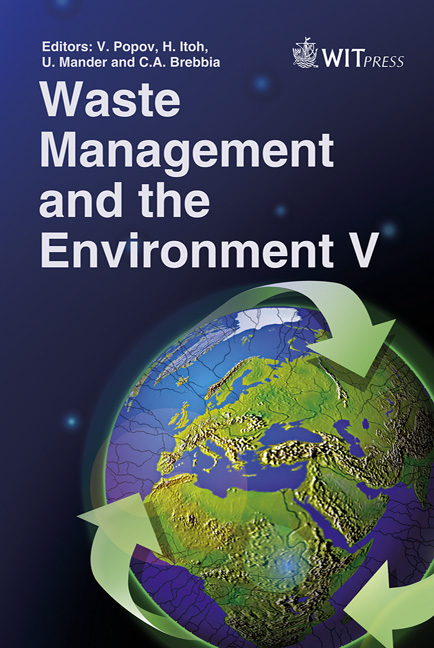Biomarkers Of Pollution In Soils Irrigated With Wastewater In Tunisia
Price
Free (open access)
Transaction
Volume
140
Pages
12
Page Range
435 - 446
Published
2010
Size
499 kb
Paper DOI
10.2495/WM100391
Copyright
WIT Press
Author(s)
F. Ben Fredj, M. Irie, J. Han, A. Charef, A. Ghrabi & H. Isoda
Abstract
Wastewater reuse for irrigation is expected in the Mediterranean basin as a sustainable alternative with socio-economic benefits. However, wastewater carries considerable amounts of harmful chemicals and trace toxic metals that are able to accumulate in soil. This pollution loading is threatening both the vegetation and the groundwater and, consequently, human health. Therefore, in this study, in vitro bioassays were used to evaluate the adverse effects of wastewater and soil extract samples, on mammalian cells, with respect to heavy metal content (Ni, Cd, Pb, Fe and Al). The irrigation water, from a wastewater treatment plant, was sampled at Zaouit-Sousse perimeter in Tunisia. A representative soil profile irrigated with wastewater (0-90 cm) and a nonirrigated profile (0-40 cm), serving as a control, were sampled in the olive-treeoccupied perimeter. The estrogenic activity of the samples was investigated using the E-screen assay, while the heat shock protein (HSP) 47 assay aimed to determine the stress response of HSP 47-promoter-transfected cells following sample addition. Furthermore, proteomics analyses were performed, aiming to establish specific biomarkers of environmental pollutants. The irrigation water samples induced a high estrogenic activity when the MCF-7 cells were treated at 10% due to the presence of estrogenic compounds. The E-screen assay revealed a cytotoxic effect of the surface soil samples (0-20 cm), even at low concentrations (0.001%). Furthermore, the proteomics experiments allowed the identification of specific biomarkers for estrogenicity and cytotoxicity on MCF-7 cells. Moreover, significant stress response was observed following the incubations of the HSP 47-promoter-transfected cells with wastewater samples,
Keywords





